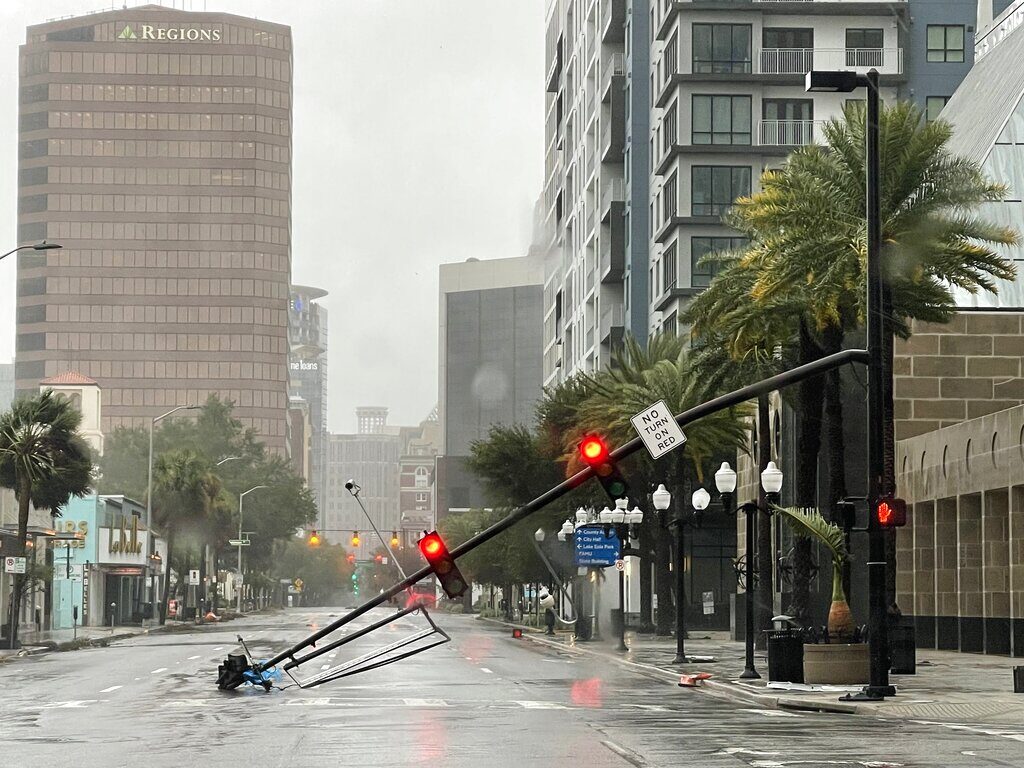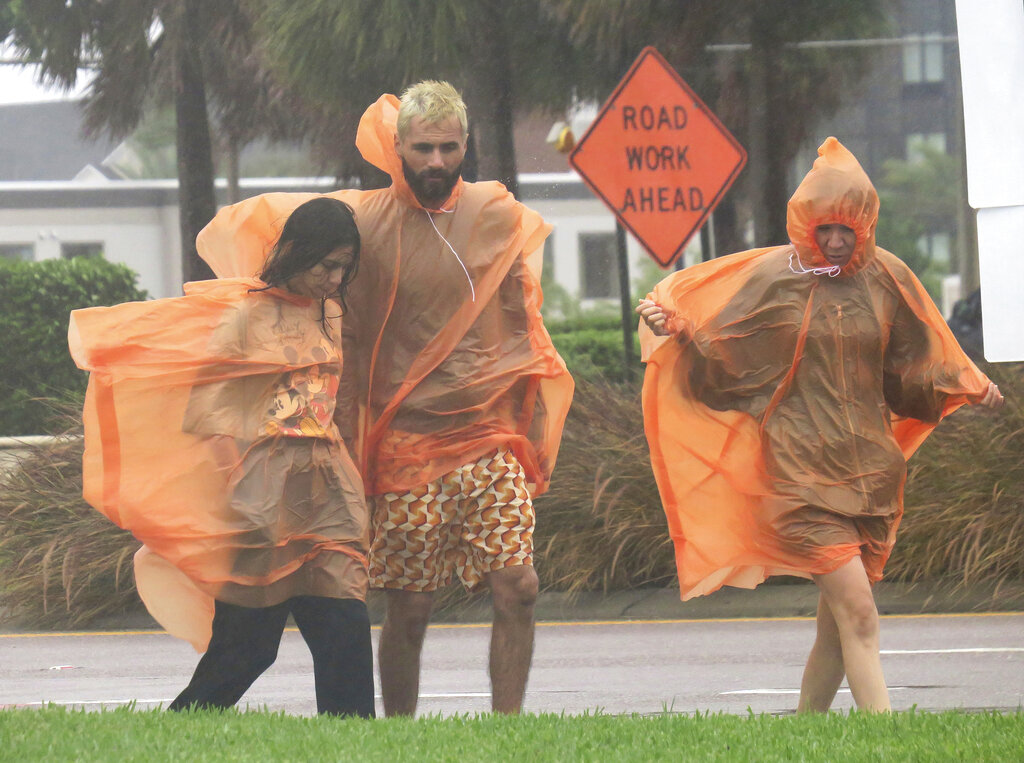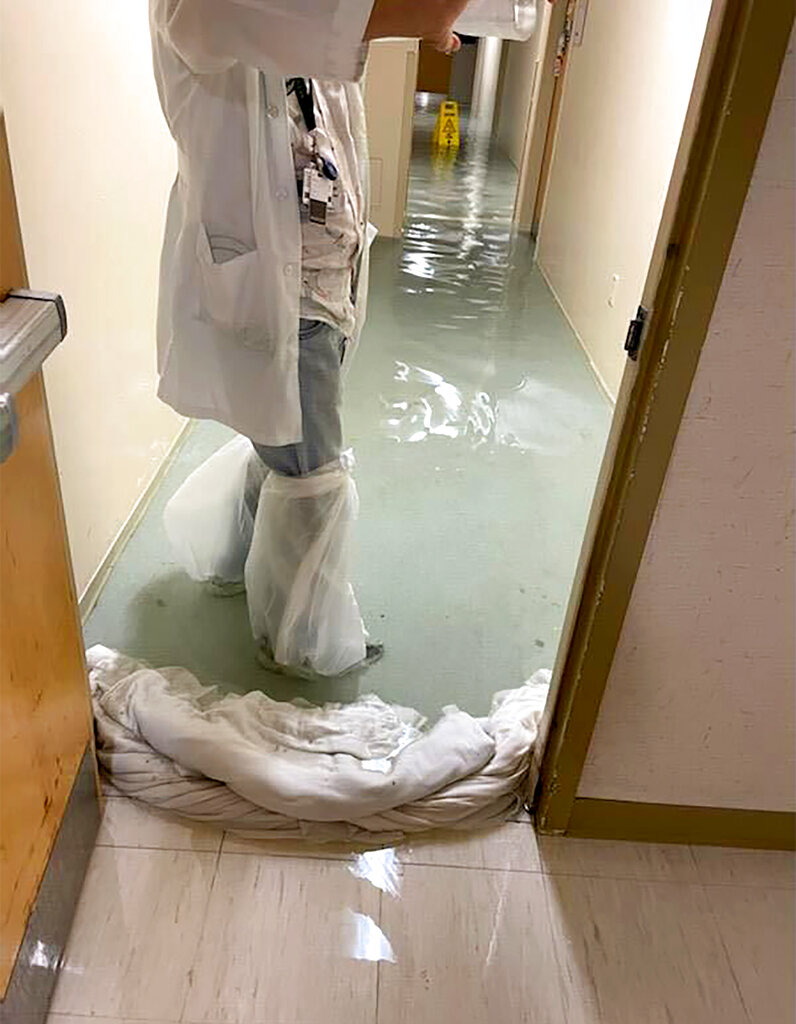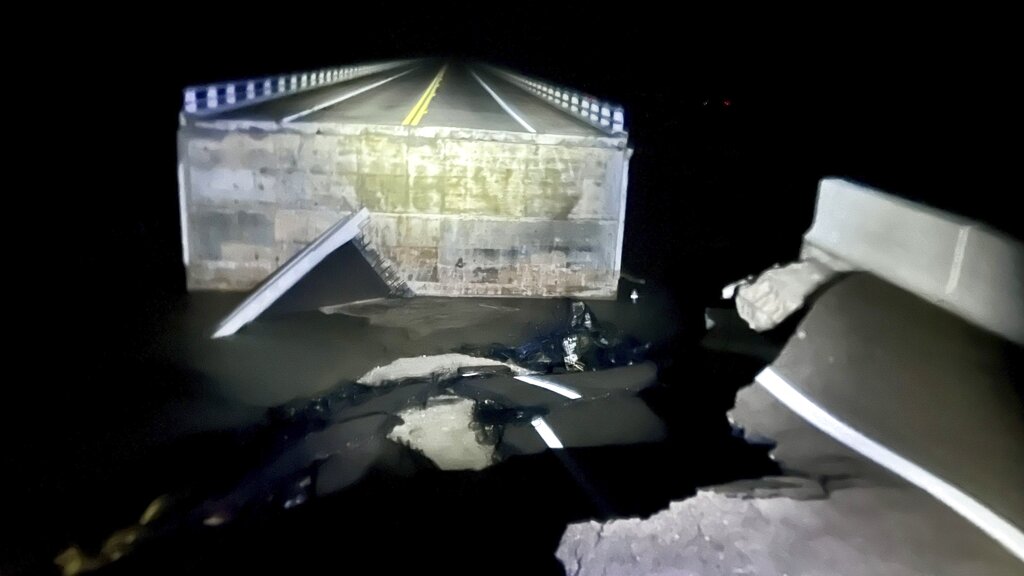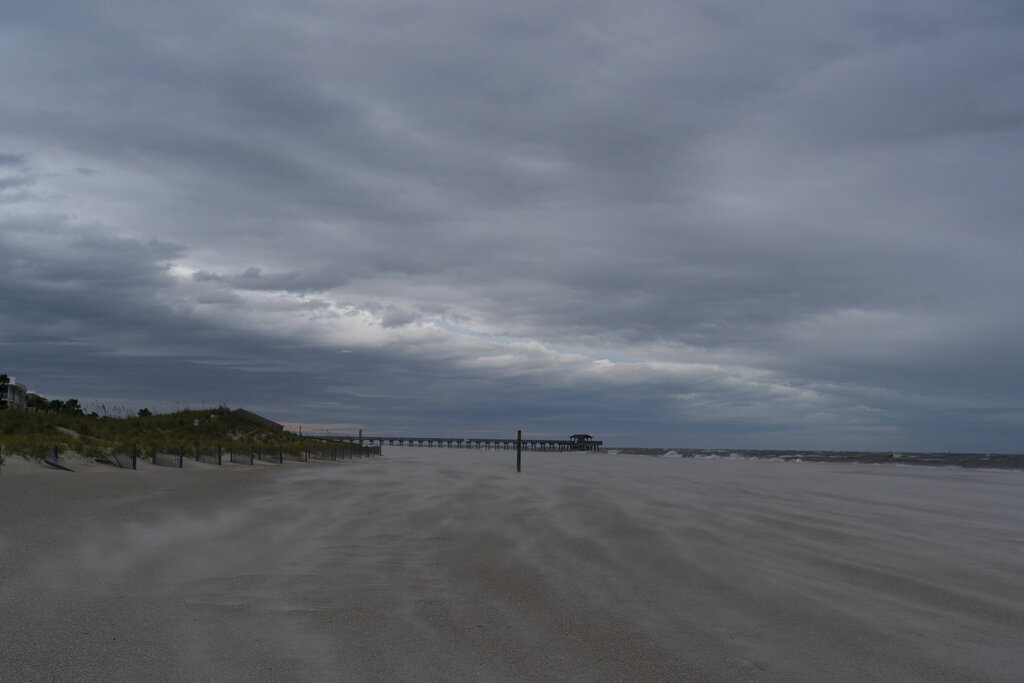ST. PETERSBURG, Fla. (AP) — Hurricane Ian carved a path of destruction across Florida, trapping people in flooded homes, cutting off the only bridge to a barrier island, destroying a historic waterfront pier and knocking out power to 2.5 million people as it dumped rain over a huge area on Thursday.
Catastrophic flooding was threatened around the state as one of the strongest hurricanes to ever hit the United States crossed the peninsula. Ian’s tropical-storm-force winds extended outward up to 415 miles (665 km), drenching much of Florida and the southeastern Atlantic coast.
“It crushed us,” Lee County Sheriff Carmine Marceno told ABC’s “Good Morning America.” He said roads and bridges remained impassable, stranding thousands in the county where Ian made landfall just north of Fort Myers. “We still cannot access many of the people that are in need.”
Authorities confirmed at least one storm death in Florida — a 72-year-old man in Deltona who fell into a canal while using a hose to drain his pool in the heavy rain, the Volusia County Sheriff’s Office said. Another person died in Cuba after Ian struck there.
Marceno said that while he lacked any details, he believed the death toll would be “in the hundreds.” Gov. Ron DeSantis later said that toll was not confirmed and was likely an estimate based on 911 calls.
Fort Myers Mayor Kevin Anderson told NBC’s “Today” that he had not been told of any deaths in the city, but Ian by far is the worst storm he’s witnessed since the 1970s.
“Watching the water from my condo in the heart of downtown, watching that water rise and just flood out all the stores on the first floor, it was heartbreaking,” Anderson said.
A chunk of the Sanibel Causeway fell into the sea, cutting off access to the barrier island where 6,300 people normally live. How many heeded mandatory evacuation orders before the storm surge washed over the island wasn’t known.
South of Sanibel, the historic beachfront pier in Naples got destroyed, with even the pilings underneath torn out, as towering waves crashed over the structure. “Right now, there is no pier,” said Penny Taylor, a commissioner in Collier County, which includes Naples.
Emergency crews sawed through toppled trees to reach people in flooded homes, but with no electricity and virtually no cell service, it was impossible for many people to call for help from the hardest hit coastal areas where the surge came in.
“Portable towers are on the way for cell service. Chances are your loved ones do not have ability to contact you,” said the sheriff’s office in Collier County, which includes Naples. “We can tell you as daylight reveals the aftermath, it’s going to be a hard day.”
In Fort Myers, Valerie Bartley’s family spent desperate hours holding a dining room table against their patio door, fearing the storm would blow their house apart.
“I was terrified,” Bartley said. “What we heard was the shingles and debris from everything in the neighborhood hitting our house…. We just assumed that it was tearing our house apart.”
As the storm raged outside, she said, her 4-year-old daughter grabbed her hand and said: “I’m scared too, but it’s going to be OK.”
Hurricane Ian turned streets into rivers and blew down trees as it slammed into southwest Florida on Wednesday with 150 mph (241 kph) winds. Ian’s strength at landfall was Category 4, tying it for the fifth-strongest hurricane, when measured by wind speed, ever to strike the U.S.
Ian’s center came ashore more than 100 miles (160 kilometers) south of Tampa and St. Petersburg, sparing the densely populated Tampa Bay area from its first direct hit by a major hurricane since 1921.
The National Hurricane Center said Ian became a tropical storm over land early Thursday and was expected to regain near-hurricane strength after emerging over Atlantic waters near the Kennedy Space Center later in the day, with South Carolina in its sights for a second U.S. landfall.
A stretch of the Gulf Coast remained under ocean water: “Severe and life-threatening storm surge inundation of 8 to 10 feet above ground level along with destructive waves is ongoing along the southwest Florida coastline from Englewood to Bonita Beach, including Charlotte Harbor,” the center said Thursday.
In Port Charlotte, a hospital’s emergency room flooded and fierce winds ripped away part of the roof, sending water gushing down into the intensive care unit. The sickest patients — some on ventilators — were crowded into the middle two floors as the staff prepared for storm victims to arrive, said Dr. Birgit Bodine of HCA Florida Fawcett Hospital.
The Florida Highway Patrol shut down the Florida Turnpike in the Orlando area due to significant flooding and said the main artery in the middle of the state will remain closed until water subsides.
Calls from people trapped in flooded homes or from worried relatives flooded 911 lines. Pleas were also posted on social media sites, some with video showing debris-covered water sloshing toward the eaves of their homes.
Brittany Hailer, a journalist in Pittsburgh, contacted rescuers about her mother in North Fort Myers, whose home was swamped by 5 feet (1.5 meters) of water.
“We don’t know when the water’s going to go down. We don’t know how they’re going to leave, their cars are totaled,” Hailer said. “Her only way out is on a boat.”
Ian dropped to a tropical storm early Thursday over land, but was expected to intensify again once its center moves over the Atlantic Ocean and menace the South Carolina coast Friday at near-hurricane strength before moving inland.
At 8 a.m. Thursday, the storm was about 40 miles (70 km) east of Orlando and 10 miles (15 kilometers) southwest of Cape Canaveral, carrying maximum sustained winds of 65 mph (100 kph) and moving toward the cape at 8 mph (13 kmh), the center said.
Hurricane warnings were lowered to tropical storm warnings across the Florida peninsula, with widespread, catastrophic flooding remaining likely, the hurricane center said. Storm surges as high as 6 feet (2 meters) were still forecast for both coasts.
“It doesn’t matter what the intensity of the storm is. We’re still expecting quite a bit of rainfall,” Robbie Berg, senior hurricane specialist with the National Hurricane Center, said in an interview with The Associated Press.
Up to a foot (30 centimeters) of rain forecast for parts of Northeast Florida, coastal Georgia and the Lowcountry of South Carolina. As much as 6 inches (15 centimeters) could fall in southern Virginia as the storm moves inland over the Carolinas, and the center said landslides were possible in the southern Appalachian mountains.
But a boat carrying Cuban migrants sank Wednesday in stormy weather east of Key West.
The U.S. Coast Guard initiated a search and rescue mission for 23 people and managed to find three survivors about two miles (three kilometers) south of the Florida Keys, officials said. Four other Cubans swam to Stock Island, just east of Key West, the U.S. Border Patrol said. Air crews continued to search for possibly 20 remaining migrants.
The storm previously tore into Cuba, killing two people and bringing down the country’s electrical grid.
The hurricane’s eye made landfall near Cayo Costa, a barrier island just west of heavily populated Fort Myers. As it approached, water drained from Tampa Bay.
More than 2.5 million Florida homes and businesses were left without electricity, according to the PowerOutage.us site. Most of the homes and businesses in 12 counties were without power.
Sheriff Bull Prummell of Charlotte County, just north of Fort Myers, announced a curfew between 9 p.m. and 6 a.m. “for life-saving purposes,” saying violators may face second-degree misdemeanor charges.
“I am enacting this curfew as a means of protecting the people and property of Charlotte County,” Prummell said.
Life-threatening storm surges and hurricane conditions were possible on Thursday and Friday along the coasts of northeast Florida, Georgia, and South Carolina, where Ian was expected to move inland, dumping more rain well in from the coast, the hurricane center said.
The governors of South Carolina, North Carolina, Georgia and Virginia all preemptively declared states of emergency.

